

Unkover your competitors’ Marketing Secrets
Say goodbye to wasting hours on competitor analysis by equipping your team with an AI-driven, always-on competitive intelligence platform.


Say goodbye to wasting hours on competitor analysis by equipping your team with an AI-driven, always-on competitive intelligence platform.

Stay Ahead with AI-DRIVEN Competitive Intelligence
Unkover is your AI-driven Competitive Intelligence team delivering critical updates about your competitors the moment they happen:
Track your competitors website changes
Why spend all day stalking the competition when you don’t have to?
With Unkover, you’ll know instantly when your competitors tweak their messaging or shake up their pricing. No more endless scrolling through their sites or second-guessing your strategies.
Let us do the heavy lifting for you, ensuring you’re always in the loop by notifying you the moment a critical change happens on your competitor’s pages.
Sit back, relax, and keep winning—Unkover makes sure you’re not just in the game, you’re always a step ahead.


Read your competitors emails
Companies love updating their customers and prospects about relevant news, product updates, and special offers.
That juicy info from your competitors? It’s yours too. Unkover will automatically capture all their emails and bring them right to your doorstep—accessible to your entire team, anytime.
[COMING SOON: Our fine-tuned AI will sift through these emails, extract key information and send them over to the best team within your org. Less noise, more signal!]
We hear you! Unkover’s goal is not to flood you with tons of data points that no one in your team will ever read. We gather competitive intelligence from thousands of data sources and use AI to highlight actionable information to the right team in your company.
Say goodbye to noise. We’re 100% signal.
ROADMAP
We’re excited to get Unkover in your hands as soon as possible and keep building the best competitive intelligence tool with your precious feedback. The roadmap for the next few months is already exciting, so take a look!
While we build and deliver, here’s our promise to you: as an early tester and customer, you’ll lock in an exclusive bargain price we’ll never offer again in the future.

Spy on your competitors’ full marketing strategy: social, ads, content marketing, email flows, and more.

Track competitive Win/Loss analysis and build battle cards. Get alerted at every pricing change.

Get immediate alerts when competitors announce new features or major releases. Identify strengths and weaknesses from online reviews.

Get the competitive intelligence you need where you need it: Slack, eMail, MS Teams, Salesforce, Hubspot, Pipedrive and more.
slack integration
Unkover’s Slack integration lets you keep your whole team up to speed with your competitors’ updates.

Join now to lock in an exclusive 50% lifetime discount
For startups and small teams, it’s the essential toolkit you need to keep an eye on a select few competitors.

Up to 5 competitors

50 pages monitored

10 email workflows

3-day data refresh
$39
/per month
$ 79
50% discount
Billed annually
For growing businesses, it allows you to monitor more competitors, pages, and email workflows.

Up to 10 competitors

100 pages monitored

20 email workflows

1-day data refresh
$79
/per month
$ 159
50% discount
Billed annually
For large companies, it is tailored to meet the needs of multiple teams needing granular insights.

Custom number of competitors

Custom number of pages monitored

Custom number of email workflows

Hourly data refresh
Custom price
Billed annually

It’s not uncommon for marketers to approach lead generation as a single hurdle they need to overcome. They set up a landing page on their site designed to collect lead information, and use a few campaigns designed to send traffic that way. And then they wait.
In reality, lead generation can be a much more complex process. You’re likely to have different audience niches, for example, who will respond to different offers. You’ll also likely need multiple campaigns to drive traffic to the lead generation page, and need to split-test your overall funnel to increase the number of high-value leads that eventually become customers.
You don’t just want to get a few names and empty emails that will never amount to buying customers simply because they want your lead magnet, after all; you want to attract high-value leads that are likely to convert.
In this post, we’re going to take a close look at how you can set up a lead generation funnel that actually converts (and how lead scoring can help!).
Leads don’t just magically pop up out of nowhere; just like actual purchases, leads typically need to be nurtured before they’re ready to get in touch with you. This means that you need to set up an intentional funnel to raise awareness for your brand, get people interested in what you have to offer, and establish at least a little trust before people will even be willing to get in touch or respond to lead generation efforts.
When planning to generate leads through webinars, for example, you need to make sure that people 1) find out about the webinar and 2) are enticed enough by what it offers so that they’ll actually sign up.
You may need to use a combination of ads targeting cold and lookalike audiences, SEO, and social sharing in order to drive enough awareness that new potential leads even see the webinar to begin with. This pushes users into the funnel, where they can assess your landing page and site to determine if they want to sign up.
You’re going to need multiple touchpoints in order to generate enough traffic and interest to get results, so it’s important to set up an intentional, dedicated funnel; a single lead magnet on a single landing page is not going to cut it.
Keep in mind that your lead generation funnel will ideally lead users to go beyond simply becoming leads, and they’ll continue through a more traditional funnel to become customers and (eventually) brand advocates or repeat clients.
Depending on who you ask, you’ll see several different variations online of a digital sales funnel.
When you’re focusing specifically on attracting and retaining high-value leads that will benefit your business long-term, these are the stages that we focus on:

Ebook
Lead Scoring for Acquisition
Learn how to use lead scoring to find more demos, product signups, and sales opportunities.
We know now that there are multiple steps involved in setting up an effective lead generation funnel. Let’s take a close look at how exactly you can set up multiple touchpoints at each stage of the funnel and how you can optimize them for success along the way.
Creating awareness requires you to reach out to cold audiences who aren’t yet familiar with your brand. This allows you to draw a large number of users into your funnel.
Exposure is the name of the game here, and reaching relevant audience niches with the right messaging in the right places will be key.
Using the following channels to create awareness can work well:
This can work in any industry, including both B2B and B2C industries. Most people associate a complex lead generation process with B2B, but let’s take a look at a great example I found for B2C service industries that can be adapted for any brand.
At the discovery/awareness stage, I searched for “dog trainer.” The second ad catches your eye; they offer any age, breed, issue, or goal, with free support for life and guaranteed results.
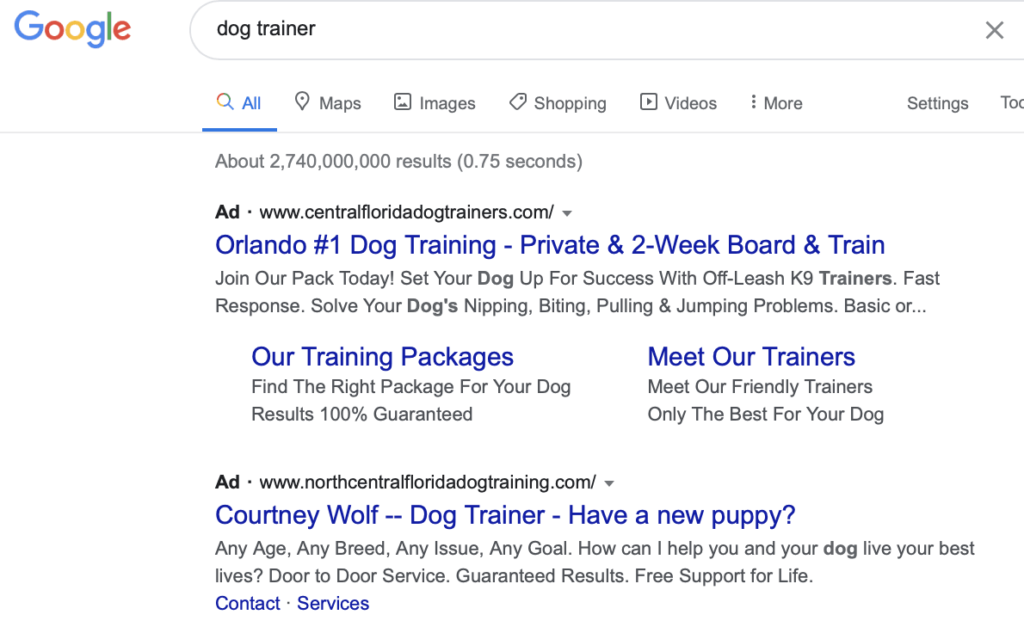
I clicked and saw this ad, which explained more about what this particular trainer offers. I’m not ready to convert right now, though, so I go and check out their Facebook Page that’s linked there.
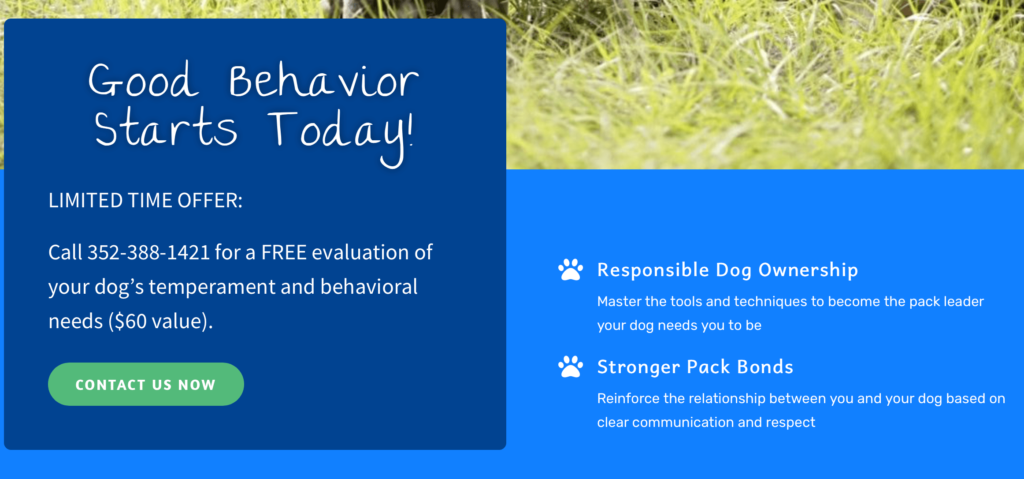
For people like me, their pets are their everything, so many will carefully research a dog trainer before hiring them. Social media is a great place to scope out reviews, see more about the people and business you’d be working with, and get a feel for their expertise. I follow them on social media.
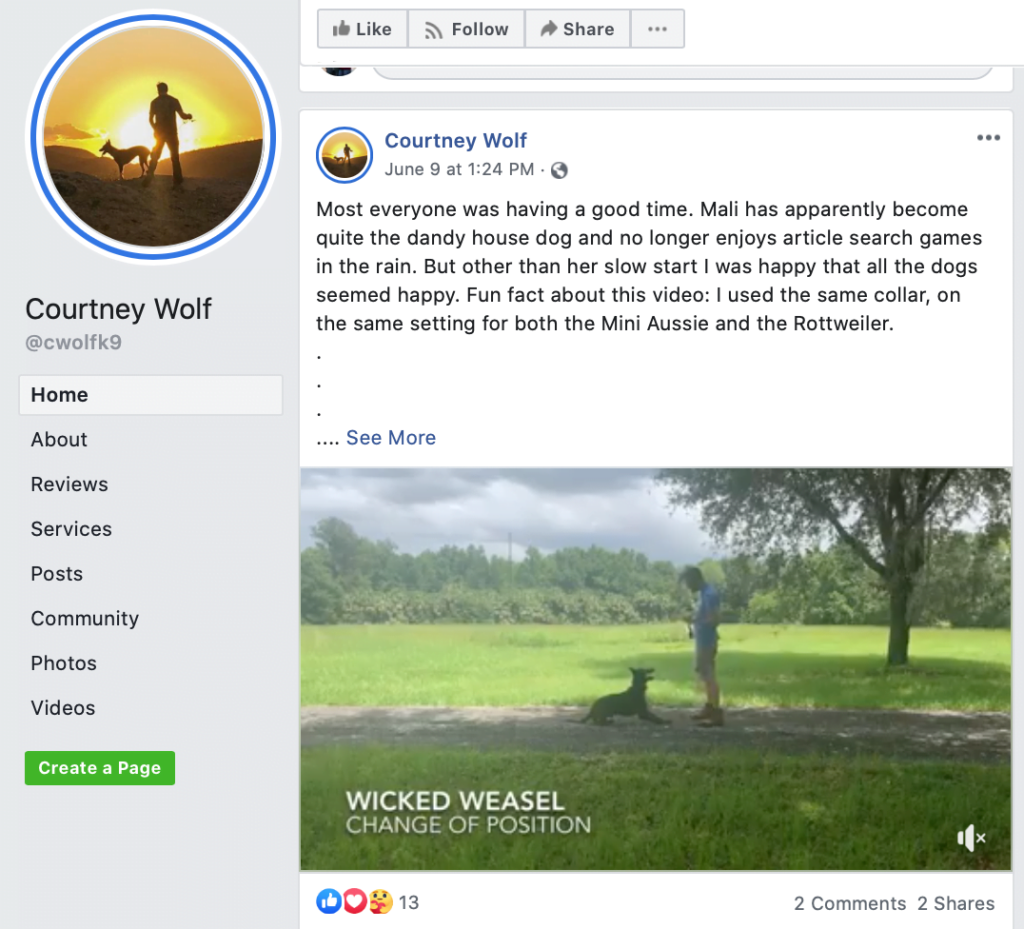
Some brands forget that this step exists. They run a PPC campaign, and suddenly have people messaging them.
Sometimes this happens (I once had a burst pipe and called the first plumber that showed up on my list without any research), but in most cases, users are going to look for more information and research your brand before they’ll offer up their information… even if you never see it.
A few weeks ago, for example, I saw a webinar about how to “covid-proof” your business. That sounds interesting, so I clicked to the landing page, which only promised: “a webinar to teach how to keep your business strong even throughout the COVID 19 crisis.”
I clicked around on the site first, because there are plenty of “gurus” or even spam sites that try to act like they know a lot more than they do (just think about how many low-quality marketing firms, “life coaches,” and even “health experts” there are out there). After clicking around, I decided that these people did not have a plethora of business experience or crisis experience, so I decided not to convert.
Building trust and intent often happens more quietly, because the lead hasn’t reached out directly. You kind of need to sit back and wait, all things considered.
Here’s what you can do to build trust, increase interest, and nurture intent:
Going back to the same dog trainer above, he’s got multiple reviews and “success stories” visible on or linked from his landing page.
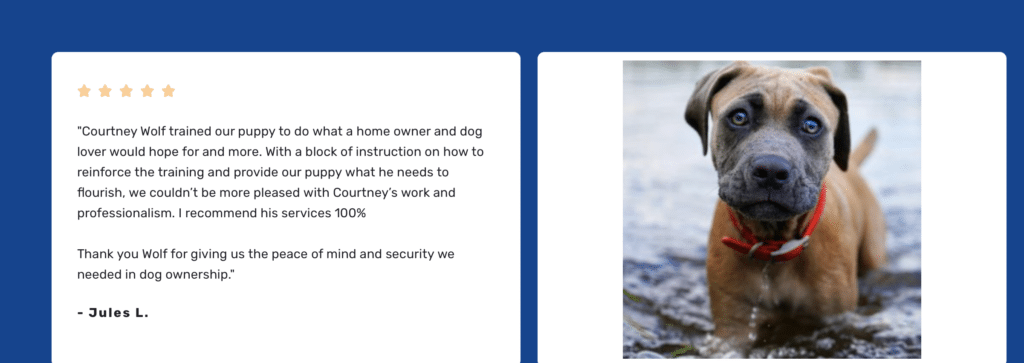
He also has a strong “About Me” section that explains why people can trust him based on his experience.

Capturing lead information is all about incentivizing users to actually get in touch with you.
There are several options you have, and it’s typically best to have multiple up and running at any given point in time. These are some of the best options we recommend:


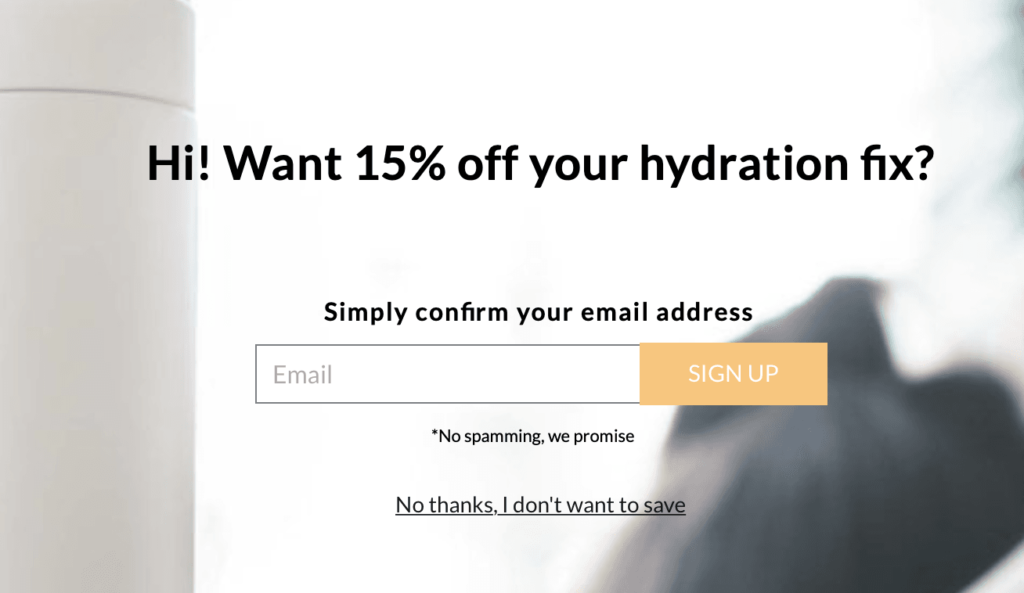
We’d love it if every single lead that you got eventually converted and became a client, but unfortunately it doesn’t work quite like that.
In my own business, I get plenty of leads who get in touch. Before jumping on a call with everyone who gets in touch with me, though, I have learned to qualify leads. I make sure that I have the bandwidth and skills that they need and that their budget aligns with my services. Otherwise, I could easily spend hours on calls that would waste my time and the lead’s time if we weren’t compatible.
Identifying prospects as those most likely to become customers is an important part of the lead generation process. It allows you to prioritize which leads you want to invest more time in.
Here are a few ways you can do this:
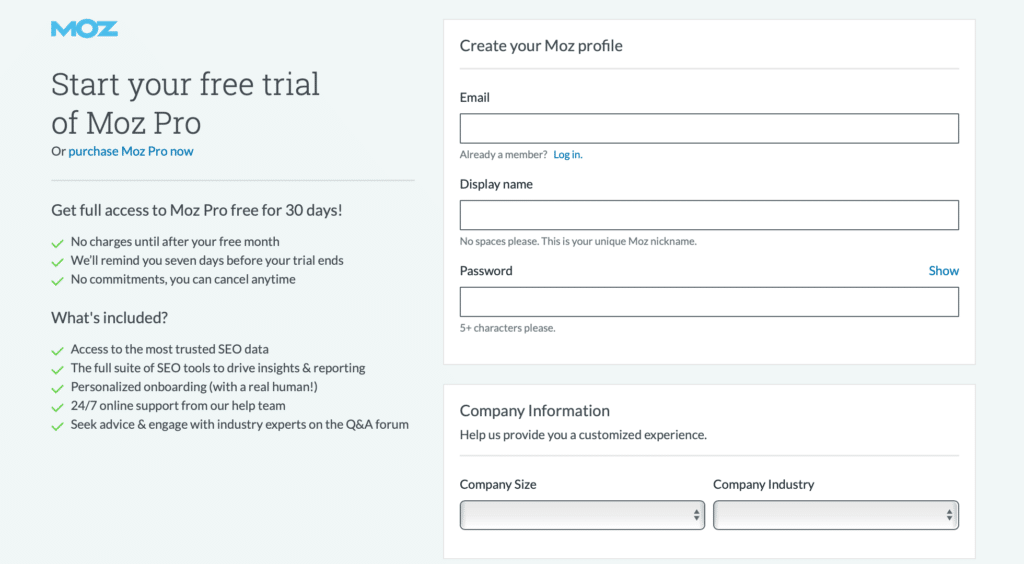
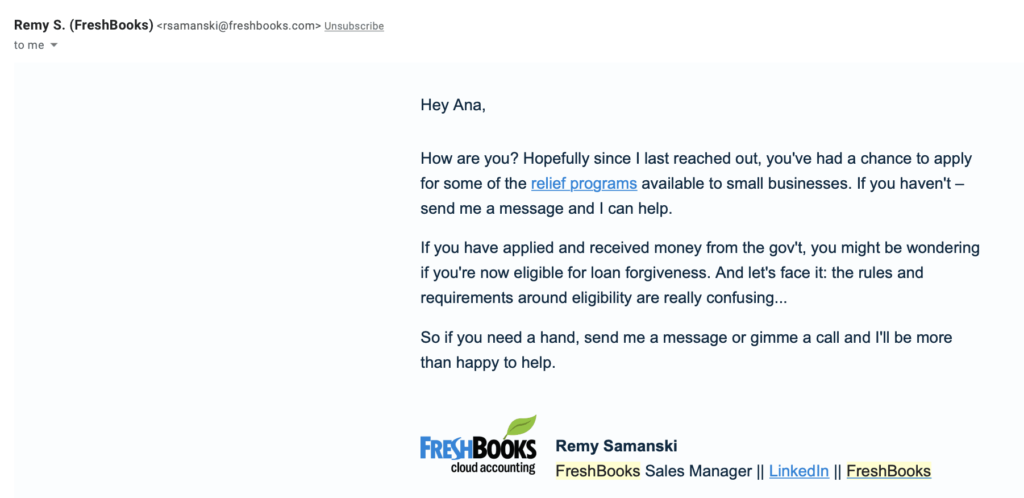
Once you’ve identified high-value leads, you’ll want to re-engage them regularly until they convert. (And then, don’t forget, you’ll want to keep engaging them so they continually purchase!).
Engaging your prospects can take a number of different forms, but these options all work well:
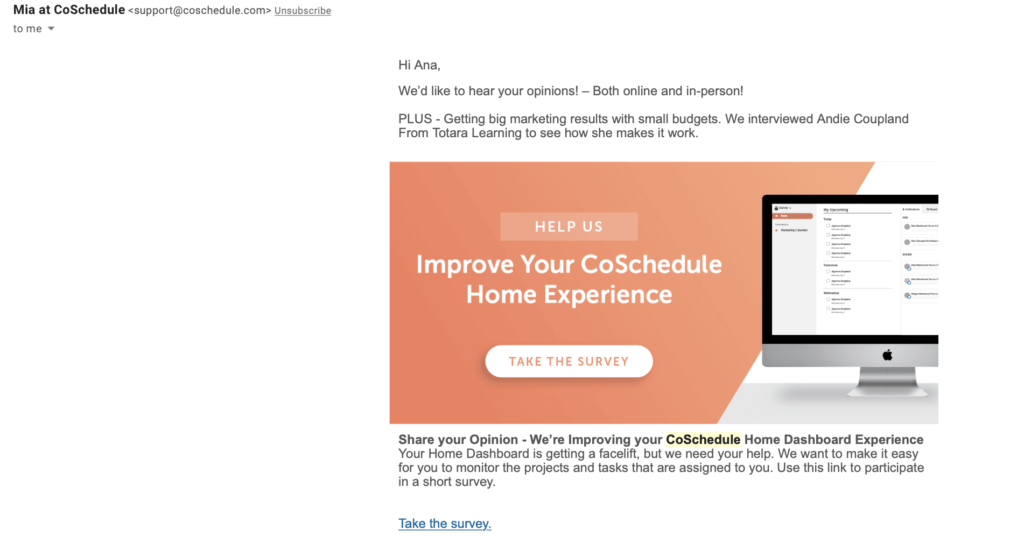
Throughout this post, we’ve looked at different ways that you can create stronger, more effective lead funnels.
In order for most B2B and SaaS brands to really increase their sales volume, however, you’re going to want to turn to lead scoring in addition to the tactics we’ve discussed so far.
Lead scoring is the process of using a set of criteria and evaluating different contacts’ characteristics to assign them a specific score. Positive attributes (whether that’s a certain trait like belonging to a specific industry or an activity like completing a lead form) gain points; negative attributes can dock points. You’ll end up with a concrete score that can help your team identify high-value leads.
Breadcrumbs is a lead scoring tool that makes this easy. We offer suggestions for lead scoring models based on a few quick questions we ask when you sign-up, but you can customize these models entirely based on your business’s needs (and as your audience and business both evolve!).
We’ll give you an alphanumeric score that helps your team evaluate exactly how valuable a lead may potentially be based on both their activity and their fit profile, with both recency and frequency of actions taken into account. This means the data is always up to date, so it’s always actionable.

And with relevant information at every point, your sales team can determine who they should be nurturing most aggressively. Which deals would appeal to which users? And should they be following up via email or call? Which plans and products should they be pushing, and why?
Our tool also allows you to test different scoring models to determine which fit and activity predictors are most impactful at helping you identify different potential audience members. This is invaluable both when you first sign up and as your business evolves.
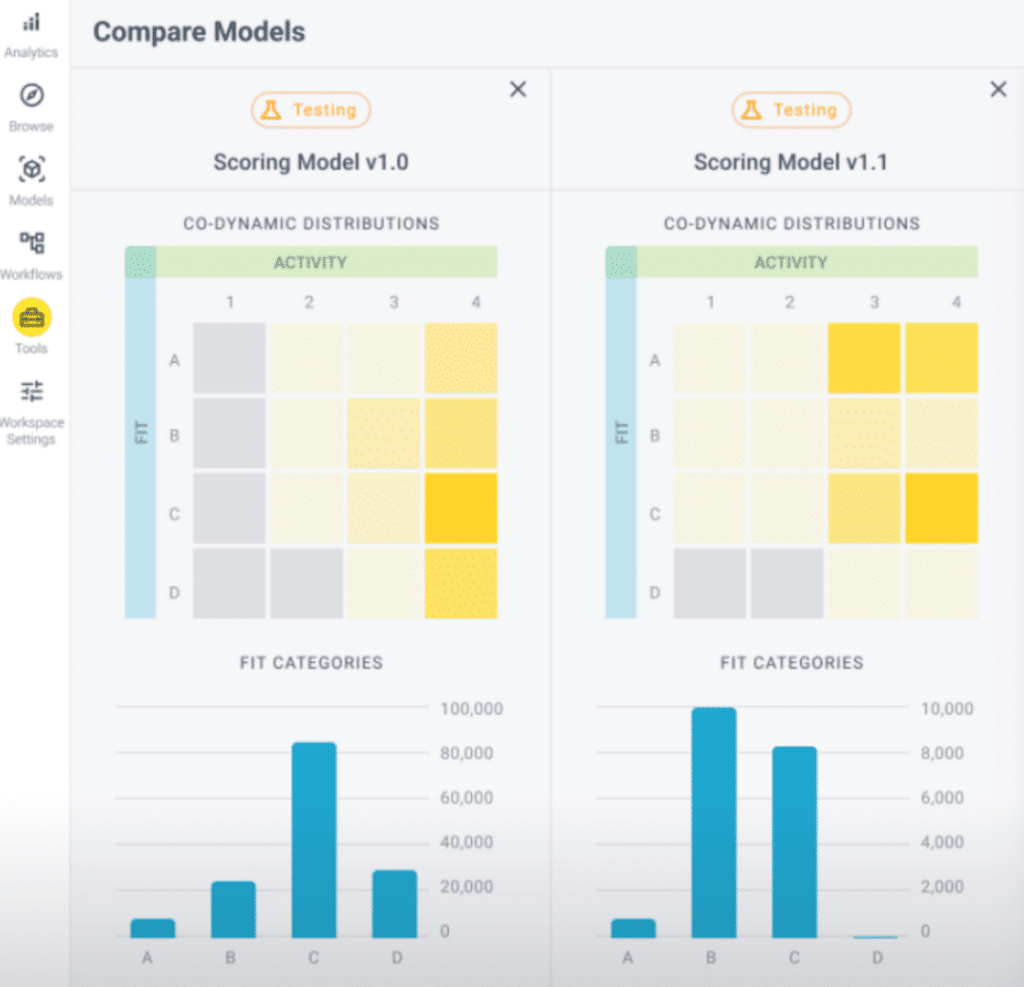
They’ll be able to make smarter, well-informed decisions faster, with less guesswork and more results. It’s a win-win for everyone involved.
Lead generation can be a long and strenuous process, even if it feels like all you need to do is slap together a great landing page and wait for the potential customers to come rolling in. Being intentional and strategic about how you’re getting leads into your funnel and how you’re nurturing through it (via multiple touchpoints, of course!) is essential to the growth of your business.
Interested in learning more about how lead scoring can help strengthen your lead generation funnel and make it more effective? Sign up for a free demo here to see how Breadcrumbs can help you!